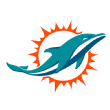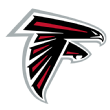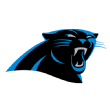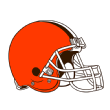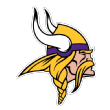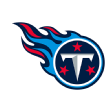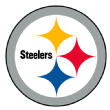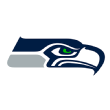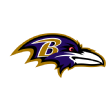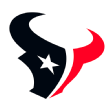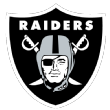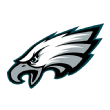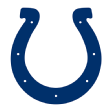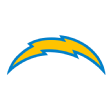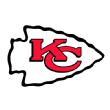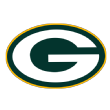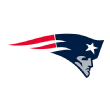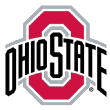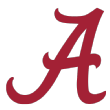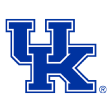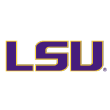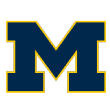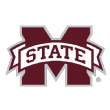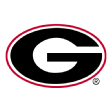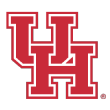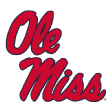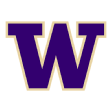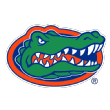Ranking baseball's rosters based on their tiers of talent
Over the past couple of weeks, we rolled out our annual
position rankings series, which usually come out around the time pitchers and catchers report. This was my first year handling the project, and I decided to structure it from the standpoint of tiers.
Doing it that way helped, I hope, offer a sense of how talent is grouped at the different positions right now, and which positions are stronger and weaker as compared to historical standards. But there is one final step we can take with this approach: What do the
teamslook like from the standpoint of tiers?
As I did with the pitching staffs, it's simple enough to dump all the ratings into a file and see how many players each team has in each tier. So that's what I did, and the results serve a dual purpose. First, they simply give us a way to look at how teams stack up in relation to each other. It's not a rigorous projection, but the hierarchy of teams organized in this way isn't much different than it looks like in an actual projection of team records.
The other thing this snapshot offers is a glimpse at how teams have constructed their rosters. This is really the interesting part. Which teams are built with a stars-and-scrubs approach? Which teams have a lot of talent bunched in the middle? Which teams are good but have an obvious void in terms of MVP-level talent? Are there any teams that look less talented than the current group of unsigned free agents? (Sadly, there is one.)
As with the pitching tiers analysis, teams are given 6 points for each player rated in Tier I, 5 points for Tier II and so on. Those total points are then divided by the total number of players being rated to give us our tier-based score. I updated the teams' rosters with the latest transactions. To break up the commentary, we'll list the teams in groups of five.
The top five
Team I II III IV V VI Total Score
Yankees 1 4 5 6 13 19 48 2.27
Dodgers 0 5 2 9 12 22 50 2.12
Red Sox 2 2 3 5 13 21 46 2.09
Astros 2 4 0 4 17 21 48 2.06
Brewers 1 1 3 6 13 20 44 1.98
The Brewers' record the past couple of seasons has eluded the foresight of most leading projection systems, but this perspective suggests that Milwaukee has built a roster that can very nearly hang star for star with the elite teams of the majors.
The Brewers' Tier I star is the reigning National League MVP,
Christian Yelich. He's joined in the upper tiers by center fielder
Lorenzo Cain. But where Milwaukee's roster really jumps out is in terms of its quality depth.
Speaking of depth, the Dodgers have gone all-in on balanced, high-quality depth for a few years now. The lack of a Tier I star is debatable. Certainly,
Clayton Kershaw was on that level before missing so much time over the past three seasons.
Justin Turner and
Corey Seager aren't far from that elite, 15-player tier either, and the latter is young enough to challenge for an MVP one of these seasons.
The Yankees and Dodgers both have 16 players ranked in Tiers I through IV. That's tied for the most in the majors -- four more than any other team.
The second five
Team I II III IV V VI Total Score
Cubs 1 2 4 4 15 25 51 1.94
Mets 1 3 5 2 12 30 53 1.91
Braves 0 2 5 5 9 29 50 1.84
Cardinals 0 2 5 4 12 29 52 1.83
Nationals 1 5 2 2 12 36 58 1.81
The Cubs look to be a hair shy of the Brewers in terms of depth, though their big three (
Kris Bryant,
Anthony Rizzo and
Javier Baez) offers more star power than any trio from Milwaukee. Not only have the Cubs and Brewers become fierce rivals, but they are both strong teams with very different roster constructions, especially in terms of the pitching staff. The Brewers have one of baseball's flashiest bullpens, while the Cubs are deep with proven, veteran starters.
As for the Mets, the Tier I player is
Jacob deGrom, a designation few would argue with. However, it might be surprising to some that New York also has three Tier II performers --
Noah Syndergaard,
Michael Conforto and
Robinson Cano. If a few of the Mets' Tier V players make a leap, this could be a very strong roster. We're talking about players such as Peter Alonso,
Amed Rosario and
Keon Broxton.
Teams 11 through 15
Team I II III IV V VI Total Score
Phillies 0 2 5 3 12 29 51 1.80
Pirates 0 2 2 7 13 27 51 1.80
Indians 3 2 1 3 13 34 56 1.80
Rays 0 1 2 5 21 25 54 1.76
Rockies 1 1 4 3 11 31 51 1.75
The fan fury in Pittsburgh over the team's lack of payroll investment continues unabated, and it's a situation that isn't helped anytime Pirates owner Bob Nutting
opens his mouth. If the Bucs were to come out of nowhere and sign
Bryce Harper to fill that goose egg in the Tier I column, suddenly Pittsburgh would leap over the Cardinals in these ratings and fall right in the general neighborhood of the Brewers and Cubs.
The team that seems to be the favorite to actually pull the trigger on Harper is Pennsylvania's other big league club, which has improved its depth but also lacks that finishing piece. If and when the signing with the Phillies happens, the tiers system would see Philadelphia and the Mets as virtual co-favorites in the NL East. But, dang, it's an awfully strong division.
Teams 16 through 20
Team I II III IV V VI Total Score
Athletics 0 1 3 4 25 29 62 1.74
Reds 0 2 3 6 13 34 58 1.72
Angels 1 0 3 4 14 28 50 1.72
Twins 0 0 2 8 18 29 57 1.70
Blue Jays 0 0 2 4 18 25 49 1.65
There is nothing sadder in any of these ratings than the zero after
Mike Trout's Tier I acknowledgment for the Angels.
Teams 21 through 25
Team I II III IV V VI Total Score
Diamondbacks 0 1 1 5 18 29 54 1.65
Mariners 0 1 2 4 15 30 52 1.63
Padres 0 1 0 6 19 32 58 1.60
Rangers 0 0 2 4 11 25 42 1.60
Giants 0 1 2 3 15 32 53 1.58
We're into the rebuilding groups now, and the presence of the Padres should serve as a reminder that there is still work to do in building up that roster. But I do love what's going on in San Diego, even if any hopes of surprise 2019 contention hinge on
Eric Hosmer and
Wil Myers playing up to the level of their contracts, and a no-name rotation overachieving. Even if it doesn't happen this year, the Friars are a franchise poised for great things in the 2020s.
The bottom five
Team I II III IV V VI Total Score
White Sox 0 0 2 1 14 24 41 1.54
Tigers 0 0 1 3 15 33 52 1.46
Royals 0 0 1 5 11 35 52 1.46
Marlins 0 0 0 3 16 30 49 1.45
Free agents 1 0 2 3 47 95 148 1.43
Orioles 0 0 0 1 13 40 54 1.28
There is only one player from the first two tiers in the bottom group and he's a free agent: Harper. In case you're wondering, these ratings are suggesting exactly what you're think they're suggesting. That is, the Orioles could field a better roster by replacing the group that they have with those veterans stuck lingering on the free-agent market. But it's unlikely that Harper,
Dallas Keuchel,
Craig Kimbrel or
Marwin Gonzalez figures into the Orioles' short-term plans.
Blast from the past
Pace of play has been a hot topic the past couple of years, as average game lengths have crept over the three-hour mark at a time when most people can't go 30 seconds without doing something on their phone. I have to confess that while I think it's an important topic, the length of games doesn't generally bother me. There are exceptions -- seven hours is a bit much,
even for a World Series game -- but when I'm at the park, games just never feel long to me. And when I'm at home, I've got about 10 things going at once, so any dead time is actually a welcome respite.
However, I do remember that in my younger days, baseball games tended to be shorter, and I can verify these memories by looking at
logs from Baseball-Reference.com. The first big league game I ever went to was in 1980. (George Brett doubled.) The average game lasted 2 hours, 38 minutes that season. That figure kept trending upward until it peaked at 3 hours, 8 minutes in 2017, a full half-hour longer than in 1980.
If you're not old enough to remember 1980 and want to get a sense of what a fast-paced game from baseball's bygone eras looks like, there is a trove of old contests on YouTube. Last week, I pulled up
Game 6 of the 1971 World Series between the Orioles and Pirates, a game Baltimore won 3-2 to force a Game 7. The game went 10 innings, but still lasted only 2:59.
Some observations:
1. There was lots of talk on the broadcast about how quickly Baltimore pitchers worked, a reflection of the philosophy of Earl Weaver's pitching coach, George Bamberger. Jim Palmer threw nine innings before giving way to a pinch hitter and, man, he did not waste time on the mound. You know that thing they do in postseason broadcasts these days, where between pitches they show someone from each dugout, then someone in the crowd -- usually someone's famous girlfriend?
With Palmer on the mound, trying to do that would have driven 21st century producers crazy. When they tried to so much as show a close-up of a hitter, the beginning of Palmer's delivery was missed. He got the ball and he threw it. If the batter stepped out, Palmer went into his delivery as soon as the batter got back into the box. A pitch clock of 10 seconds wouldn't have fazed him.
2. The Orioles trailed 2-1 into the seventh inning and with one out, light-hitting No. 8 batter Mark Belanger singled. Weaver then let Palmer hit for himself, and the Hall of Fame righty struck out looking against Bob Johnson. This is not a thing that could happen in 2019.
3. Roberto Clemente went bonkers in that World Series, going 12-for-29 with a couple of homers, including one to score the first run of Pittsburgh's 2-1 win in Game 7. He also showed off his
legendary throwing arm. If you ever wondered what all the hullabaloo is about Clemente, it was all on display in that series.
During the middle innings of Game 6, the broadcast shifted to Tony Kubek, who was filling the Buster Olney role for NBC. Kubek related how much the Baltimore fans around him were marveling at just how good Clemente really was, because as an American League city, they'd never seen him play before. Remember, this is 1971, but Kubek said, "This is a pretty good argument for interleague play." That was 26 years before the idea came to fruition.
4. It was a real pleasure listening to Curt Gowdy call a game. But during Game 7, which was played on a Sunday, Gowdy decided to give some NFL scores in the middle of the ninth inning. He said, "Miami murdered New England 41-3." You don't really hear that verb used that way anymore in sportscasting.
The drought is over
In case you missed it, host country Panama knocked off Cuba in the final of the most recent Caribbean World Series, and did it in the stadium there named after MLB Hall of Famer Rod Carew. It was the first time Panama had won the event since 1950. In honor of that, I decided to piece together the all-Panama team -- all big leaguers who were born in that country. It's a pretty good one: 1B, Rod Carew; 2B, Rennie Stennett; SS, Ruben Tejada; 3B, Johan Camargo; C, Manny Sanguillen; LF, Carlos Lee; CF, Roberto Kelly; RF, Ben Oglivie. The starting pitcher would be Bruce Chen, which, well, he's a great dude, but that squad is a little light in the rotation. But if our all-Panama team does get the lead, forget about it. The closer is Mariano Rivera.
Last word
One of my rites of spring is to read quotes from
players dismissing the forecasts of projection systems. I will say one thing about
PECOTA's last-place forecast for the Cubs: It doesn't match up with other systems, and it doesn't match up with Vegas. PECOTA is either going to be very right or very wrong about this year's Cubs.
